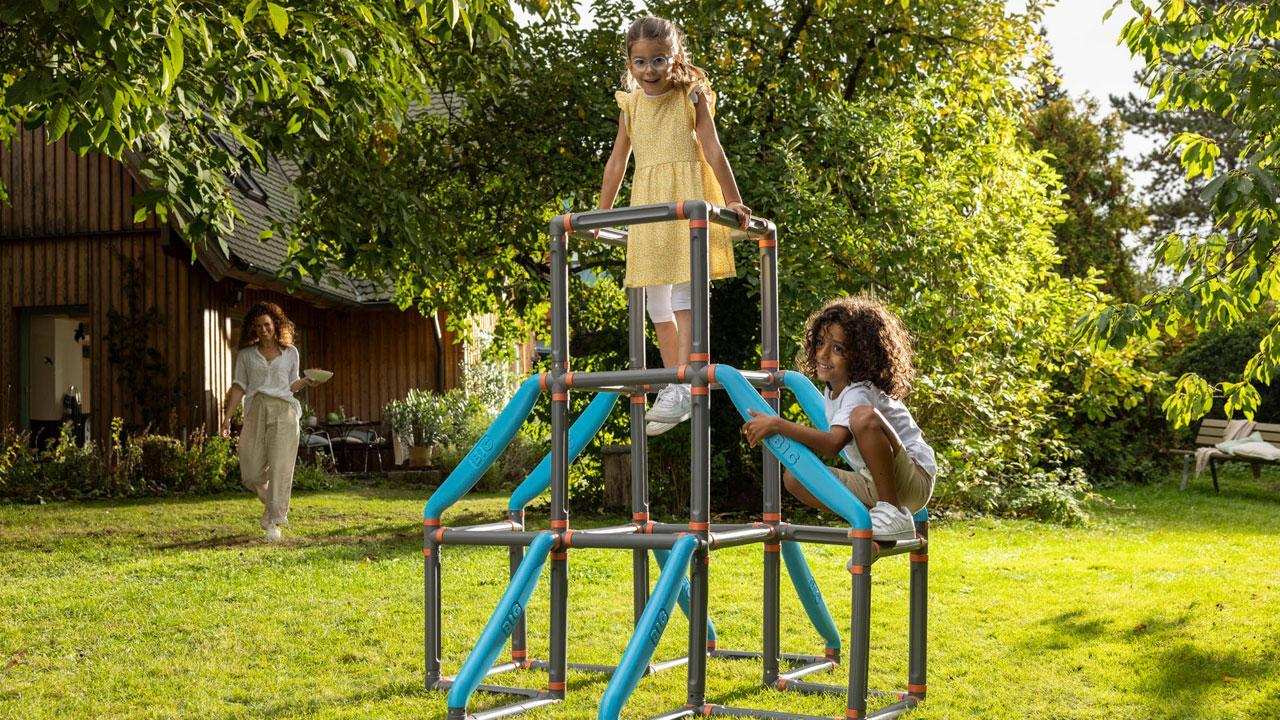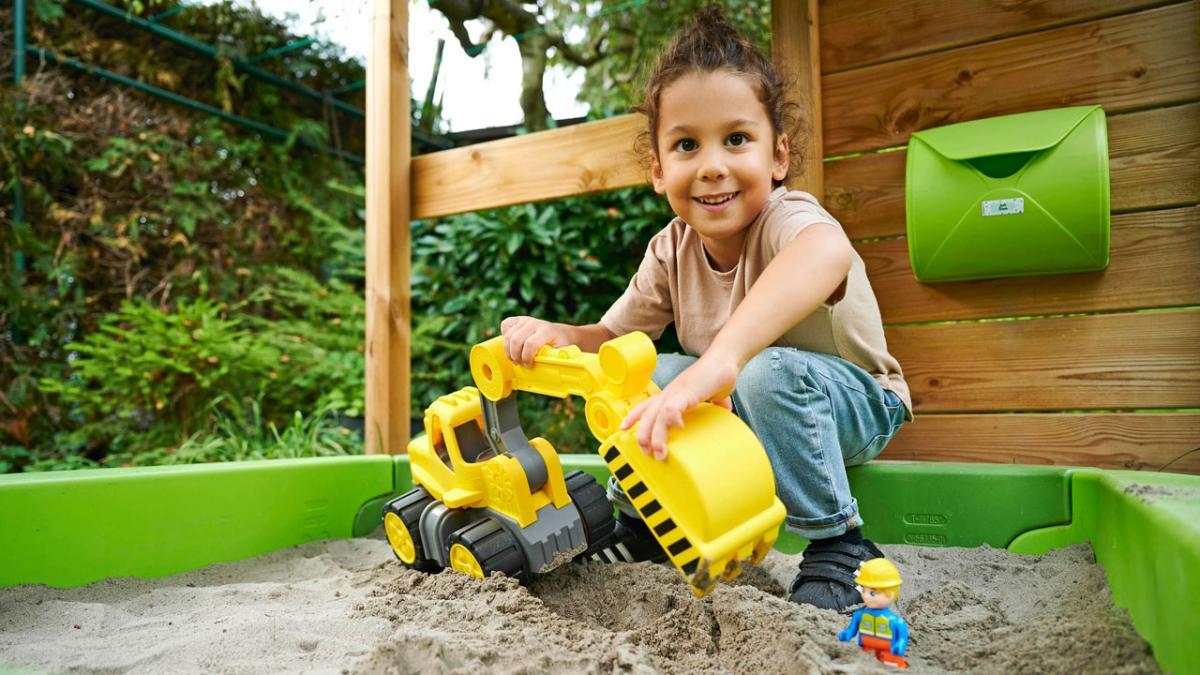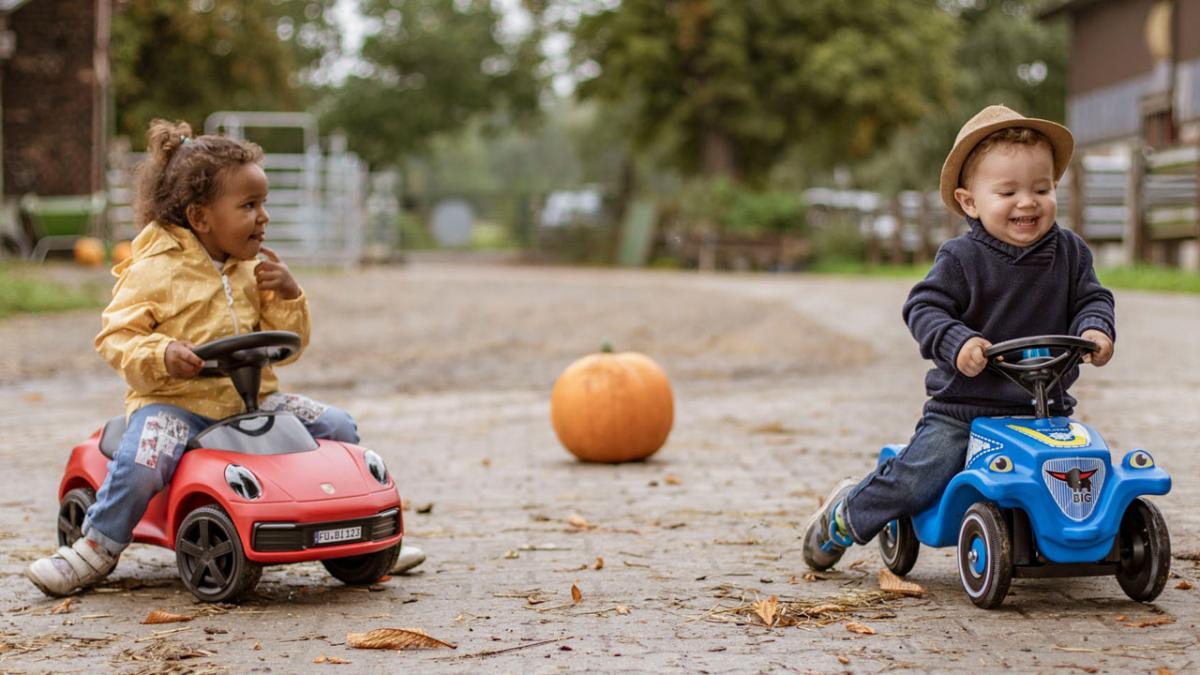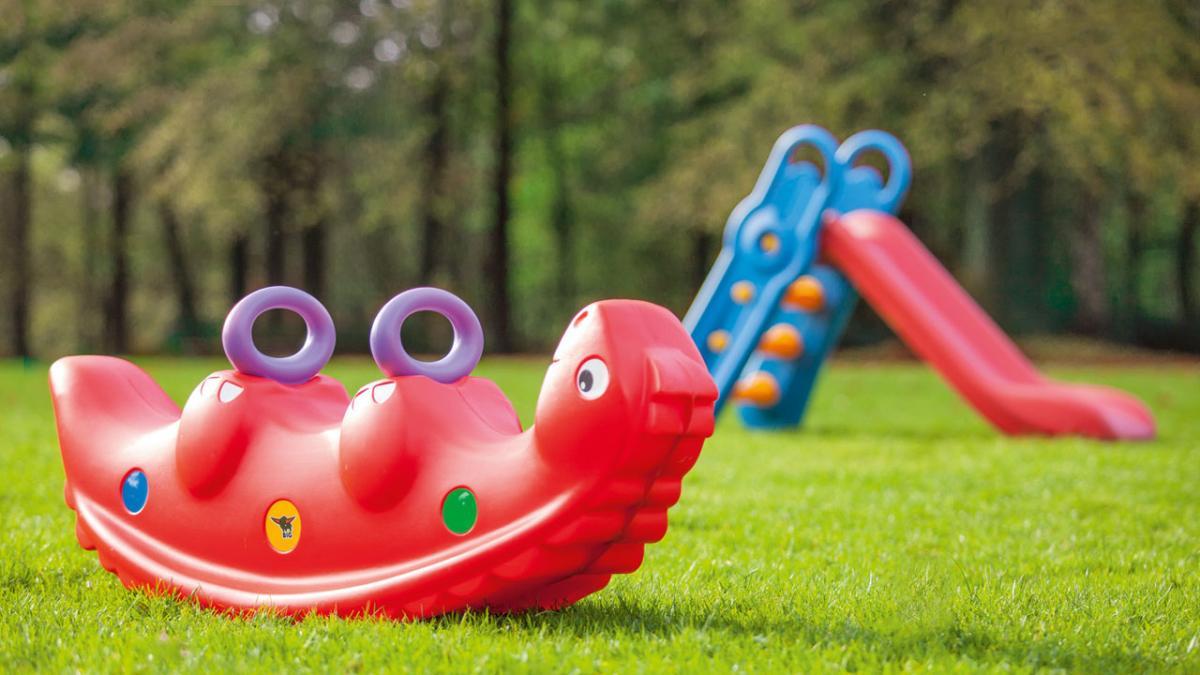Motor skills toy

-
By
Vanessa M.
Motor skills toys: the be-all and end-all for healthy development in children
The development that children undergo in the first years of growing up sets the course for the rest of their lives and forms the foundation for everything they will learn, know and be able to do one day. The development of motor skills plays a major role in a child's development. Toys that promote precisely these skills are known as motor skills toys and help parents and educators to support children's movement development in a meaningful and age-appropriate way.
This article shows how toys promote the motor development of children of different ages and describes exciting games for fine motor skills and gross motor skills.
What exactly does the term motor skills actually mean?
What exactly is meant by motor development? To answer this question, we first need to clarify the term motor skills. By definition, motor skills encompass all body movements that can be consciously controlled. Accordingly, motor skill development refers to the development of all these movement sequences, whereby a further distinction must be made between gross motor and fine motor development. Both areas of motor skills play a central role in healthy child development, which is why you should promote them equally in your child. This works extremely well with motor skills toys, which your child can use to playfully try out a wide variety of movements.
So that you can use the toys to promote gross motor skills and fine motor skills in a targeted manner, you naturally need to know which movements belong to which motor skill area:
Gross motor development in children
Gross motor skills include movements that involve larger muscle groups. These primarily include large movements and movement sequences that involve the whole body. Typical examples of gross motor movements are crawling, walking and running, hopping and jumping, dancing, climbing stairs, throwing and climbing. If you are looking for more detailed information on gross motor skills in children, you will find it in our gross motor skills guide.
To promote gross motor skills in a fun way, you can use motor skills toys that encourage your child to move physically. The perfect game for gross motor skills motivates your child to discover new movement sequences, train their balance and test out what their body can do.
This works, for example, with outdoor and garden toys that invite your child to romp, run and play in the fresh air. By offering your child a toy like this, you enable them to engage with their gross motor skills in a carefree way and playfully use all their body muscles. The climbing toys from BIG, such as the BIG Kraxxl Tower, are all ideal for offering children a number of valuable opportunities to try out and move around.
Fine motor development in children
In contrast to gross motor skills, fine motor skills refer to the small, precise movements of individual body parts. Your child may need their fine motor skills to grasp objects, tie their shoes, turn the pages of a book, eat properly with cutlery, button a shirt, brush their teeth, draw or write. Fine motor skills therefore become an indispensable skill for children when they start school at the latest.
Games for fine motor skills give children the opportunity to improve their hand-eye coordination and concentrate on fine movements. For example, when your child plays with toy excavators and transports sand from one place to another by steering the excavator shovel, fine motor movements are at the heart of the fun. This makes toy diggers excellent motor skills toys for promoting fine motor skills in children.

Motor skills toys: the right encouragement at the right time
Even though children's motor development is individual at different ages, it can be roughly said which developmental stages children go through on average at which age. Get an overview right away and find out which motor skills toy best supports motor development in children of which age group:
Motor development as a baby
Anyone who thinks that motor development is not yet in full swing in babies is completely wrong: Within the first twelve months of life, the scope of what the baby can do motorically grows steadily. On average, babies are able to lift their chin around four weeks after birth, after four months they are able to sit with a little help from the outside and at around ten months they start the "big crawl".
In order to build up the muscles needed to perform increasingly complex movements, babies should spend time in a prone position at an early age and play with age-appropriate baby and toddler toys. Toys that can be used to develop motor skills in babies include rattles and rings to grasp as well as mobiles that encourage them to turn their heads upright. In the second half of the first year of life, you can also offer your baby stacking and sorting toys without small parts that can be swallowed.
Motor development from the age of 1
Motor development from the age of 1 is characterized by one major goal: Mobility. Crawling, which one-year-old toddlers are already practiced at, is now slowly coming to an end. In the course of the first year of life, standing, which has usually already been discovered, gradually turns into taking the first steps. To do this, many children initially shimmy along pieces of furniture or still need the hand of an adult to give them security and help compensate for small losses of balance.
Baby walkers, such as the 3-in-1 baby walker, are now the ideal motor skills toys and do a great job as a companion for the first attempts at walking. You can also prepare your child for walking before they take their first steps with a BIG Bobby Car or other ride-on cars. The vehicles for toddlers promote coordination and balance and awaken the desire to move independently - ideal conditions for a successful start to walking!

Motor development from the age of 2
Which toys are useful for motor development from the age of 2? Any motor skills toy that gives your child the joy of physical activity and helps them to become even more confident in independent movement.
For the majority of two-year-olds, standing and walking without help is no longer a significant challenge. That's why your child can now expand their repertoire of movement options and hone their fine motor skills. You can support them with motor skills toys that require precise movements to use. This applies to the BIG Power Worker, for example.
Motor development from the age of 3
Motor development from the age of 3 benefits from plenty of active time indoors and outdoors as well as motor skills toys that invite children to experiment with a wide variety of body movements. After all, three-year-olds are not only mobile, but are often already quite agile and really enjoy going on discovery tours full of curiosity.
You can satisfy their thirst for adventure by transforming your own garden into a small private playground to further develop their gross and fine motor skills.
Rockers, climbers, slides and the like bring plenty of action into play and open up great opportunities as activating toys for motor development. When rocking, for example, your child needs their sense of balance and strengthens different muscle movements through the typical rocking movements, while they can experiment with the slide: Is it balanced enough to slide on its knees? And what about sliding on their stomach? Climbing is all about getting strong arms and legs and being able to orientate themselves well.

In the cold winter months, when the weather is not ideal for sliding, seesawing and climbing, a sledge is the perfect motor skills toy. This is because sledging also trains your child's balance, coordination and body tension.
Always bear in mind that the speed at which children develop is very individual and can vary greatly from child to child.
Conclusion: Motor skills toys pave the way for healthy child development
From sitting upright and grasping objects to crawling, walking and running to dancing, clapping, gymnastics and writing, there are countless activities that neither children nor adults can perform without motor skills. It is therefore very important that you provide your child with appropriate support for their motor development from an early age.
Motor skills toys, such as those you can buy in top quality from the BIG Shop, provide valuable stimulation for movement and ensure that the fun of movement is not neglected.
